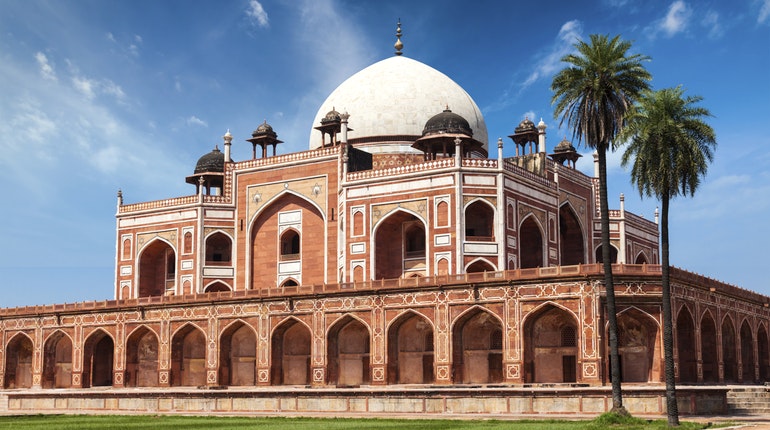Mughal emperor in the mid-16th century by Haji Begum, Humayun's Persian-born wife

Humayun’s tomb is sublimely well proportioned, seeming to float above its symmetrical gardens. It's thought to have inspired the Taj Mahal, which it predates by 60 years. Constructed for the Mughal emperor in the mid-16th century by Haji Begum, Humayun's Persian-born wife, the tomb marries Persian and Mughal elements, with restrained decoration enhancing the architecture. The arched facade is inlaid with bands of white marble and red sandstone, and the building follows strict rules of Islamic geometry, with an emphasis on the number eight.
The tomb has had six years of restoration, and a new visitor centre is due to open at the site. The surrounding gardens contain the tombs of the emperor’s favourite barber – an entrusted position given the proximity of the razor to the imperial throat – and Haji Begum. This was where the last Mughal emperor, Bahadur Shah Zafar, took refuge before being captured and exiled by the British in 1857.
To the right as you enter the complex, Isa Khan’s tomb is a fine example of Lodi-era architecture, constructed in the 16th century. Further south is the monumental Khan-i-Khanan’s tomb, plundered in Mughal times to build Safdarjang’s tomb.